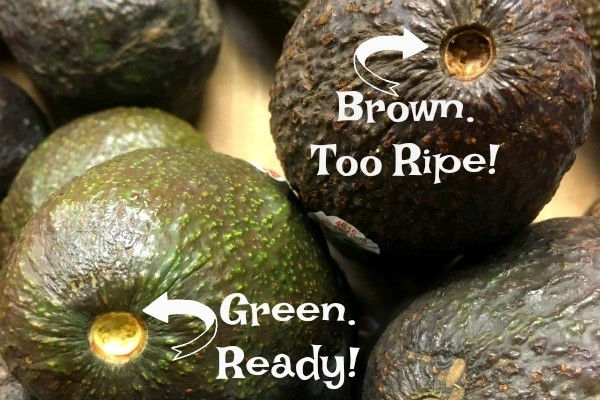Avocado Hacks
- thefoodscientistke
- Aug 3, 2020
- 4 min read
You ever bought several avocados, all at 'different' stages of ripeness, only to have them ripen at the same time and you had to 'catch up' with them or give them away to avoid spoilage? Okay. Me too. Have you ever consumed half an avocado and kept the other half for later, only to find it all blackish and nasty?
Herein are a few hacks you can employ at home to reap the benefits avocados have to offer.
First Things First....
Select your avocados well to get the best quality. Consider the following:
Skin
Different varieties of avocado have different skin colors and could be misleading to choose them just for their color. However, unripe avocados are generally lighter in color and continue darkening until they are ripe.
Check for any deep indentations and bruises that make the avocado prone to spoilage and contamination.
Firmness
A ripe avocado is firm, and yields to gentle pressure. It it feels firm but does not yield to gentle pressure, it could be almost ripe and not ready to it. (There is a link at the bottom of this page for more information on how firmness relates to ripeness).
When testing for firmness, make sure you do not use your fingertips as that could lead to bruising.
An avocado that feels mushy on touching, caving in upon slight pressure, is overripe and no longer suitable for consumption. If it is spoiled and overripe, it will have a rancid smell. It will stink.
Under the Stem
Checking under the area the avocado was attached to the stem is also an important tip. In most cases, avocados still have a bit of the stem even when they are ripe. If you peel off the step, it should be green if it is ripe and not spoiled. If it is brown, it is probably spoiled and brown on the inside as well.
Storage
How you store your avocados depends on their stages in ripeness and the state in which you want to keep them. Let m,e explain. Sometimes, you buy raw avocados for use at a future date, and sometimes you buy almost ripe ones to consume immediately.
Counter-top
Avocados ripen gradually at room temperature without any special conditions. Therefore, almost ripe avocados can be kept at room temperature awaiting ripening, especially if you are planning to use them soon.
A halved avocado can be stored on the counter-top for a few hours if you squeeze lemon juice on it to avoid browning.
...With Other Fruits
In some cases, you want your avocados to ripen faster. So, the key is to expose them to ethylene, which is the hormone responsible for inducing and supporting ripening.
Some fruits produce a lot of ethylene and thus ripen faster. Bananas for example, are good producers of ethylene, and so are passion fruits and apples.
You can store your avocado with these fruits to hasten the ripening process and remove them from this storage once they are ready to ensure they do not become overripe.
Refrigeration
Ripe uncut avocados can be kept in the fridge, which increases their lifetime by a few more days. Don't keep them there for too long though.
Firm but unripe avocados can be chilled for up to two weeks. In the fridge, they continue ripening, but at a much slower rate. You can take them out a day or two before you use them to accelerate their ripening when you are ready.
If you want to keep a cut avocado in the fridge, squeeze lemon juice on it, which prevents enzymatic browning (which causes your avocado to be blackish)
***Browned avocados are not unsafe to eat. It is just that they are not as appealing.***
***This browning occurs when an enzyme called polyphenol oxidase, in the presence of oxygen, converts phenolic compounds in the fruit to quinones, which then polymerize and form brown polyphenols ***
***Lemon juice has high ascorbic acid (vitamin C), which reacts with oxygen instead and inhibits the browning ***
Moreover, you can scrap off the brown parts of an avocado and then enjoy the fruit.
Freezing
Freezing foods works to prevent spoilage in two main ways. The low temperatures are unsuitable for microbial activity that results to spoilage. Second, it makes the moisture in the foods unavailable by turning it into solids, making it impossible for micro-organisms to use it.
You can freeze avocados in halves after squeezing lemon juice on them, and then store them in a ziploc bag after they are frozen. However, this process changes the texture after it thaws. The fruit will, however, be amazing for using in smoothies.
Another way is by first mashing the avocado, mixing it with lemon juice, putting it in ziploc bags and you can use them for guacamole and smoothies whenever you want. You can also freeze them in cubes, which makes them a good option for making cool smoothies without watering them down as is the case when using normal ice cubes. This is a cool hack for so many other fruits.
Whenever you have many avocados, utilize them as a substitute for butter, incorporate them in almost all smoothies, well, and in almost all foods.
Cool Fact: The browning process explained above is a natural protection mechanism of fruits once their flesh is exposed to oxygen. The quinones formed are toxic to bacteria, and the fruit can survive a while longer after they are formed before the fruit begins to rot. Cool, right?
Below are links you can read to learn more interesting stuff about avocado
You can click the images on the post to see from where they came from (applies to those obtained from the internet)
*See you next time*
How to Pick & Buy Fresh Avocadoshttps://loveonetoday.com/how-to/pick-buy-fresh-avocados/#:~:text=If%20the%20avocado%20yields%20to,is%20perfect%20for%20that%20day.
Control of Ethylene in fruits & vegetables warehouses and cold stores https://www.bryair.com/technical-articles/control-of-ethylene-in-fruits-vegetables-warehouses-and-cold-stores/#:~:text=Fruits%20are%20either%20ethylene%20producers,etc.%2C%20are%20ethylene%20sensitive.
Why Do Avocados Turn Brown? – The Chemistry of Avocados https://www.compoundchem.com/2014/08/03/why-do-avocados-turn-brown-the-chemistry-of-avocados/#:~:text=In%20the%20presence%20of%20oxygen,another%20class%20of%20compounds%2C%20quinones.&text=This%20browning%20isn't%20unique,a%20consequence%20of%20this%20reaction.
The science of freezing foods https://extension.umn.edu/preserving-and-preparing/science-freezing-foods













Comments